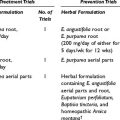V
VALERIAN
| Common Name: | Valerian |
| Botanical Name: | Valeriana officinalis |
| Family: | Valerianaceae |
| Plant Part Used: | Root and rhizome |
| Common Name: | Mexican valerian |
| Botanical Name: | Valeriana edulis |
| Family: | Valerianaceae |
| Plant Part Used: | Root and rhizome |
PRESCRIBING INFORMATION
| Actions | Valerian and Mexican valerian:anxiolytic, mild sedative, hypnotic, spasmolytic | |
| Potential Indications | ||
* This dosage is extrapolated from the British Pharmaceutical Codex 1949, the British Herbal Pharmacopoeia 1983, the British Herbal Compendium 1992, and the author’s education and experience.
** This dose range is extrapolated from the pharmacologic and clinical information available on valepotriates.
SUPPORTING INFORMATION
Except when specifically referenced, the following book was referred to in the compilation of the pharmacologic and clinical informationMills S, Bone K. Principles and Practice of Phytotherapy: Modern Herbal Medicine. Edinburgh: Churchill Livingstone, 2000.
1 Andreatini R, Loire JR. Eur J Pharmacol. 1994;260:233-235.
2 Garges HP, Varia I, Doraiswamy PM. JAMA. 1998;280(18):1566-1567.
3 British Herbal Medicine Association’s Scientific Committee. British herbal pharmacopoeia. Bournemouth: BHMA, 1983.
4 Felter HW, Lloyd JU. King’s American dispensatory, ed 18. Portland: Eclectic Medical Publications, 1905. rev 3, reprinted 1983
5 Valeriana edulis, Secretaria de Medio Ambiente, Recursos Naturales y Pesca (SEMARNAP, a Mexican government environmental department). Information available via URL: http:www.semarnap.gob.mx/.
6 Chamberlin RV. Mem Am Anthropol Assoc. 1911;2(5):331-405.
7 Smith HH. Bull Public Mus City Milw. 1923;4:1-174.
8 Smith HH. Bull Public Mus City Milw. 1928;4:175-326.
9 Hazelhoff B, Malingre TM, Meijer DK. Arch Int Pharmacodyn Ther. 1982;257(2):274-287.
10 Kuhlmann J, et al. Pharmacopsychiatry. 1999;32(6):235-241.
11 Dorn M. Forsch Komplementarmed Klass Naturheilkd. 2000;7(2):79-84.
12 Donath F, et al. Pharmacopsychiatry. 2000;33(2):47-53.
13 Herrera-Arellano A, et al. Planta Med. 2001;67(8):695-699.
14 Schmitz M, Jackel M. Wien Med Wochenschr. 1998;148(13):291-298.
15 Wheatley D. Phytother Res. 2001;15(6):549-551.
16 Blumenthal M, et al, editors. The complete German Commission E monographs: therapeutic guide to herbal medicines. Austin: American Botanical Council, 1998.
17 Scientific Committee of the European Scientific Cooperative on Phytotherapy [ESCOP]. ESCOP monographs: Valerianae radix. Argyle House, Gandy Street, Exeter, Devon, EX4 3LS, United Kingdom: European Scientific Cooperative on Phytotherapy, ESCOP Secretariat, July 1997.
VERVAIN
| Botanical Name: | Verbena officinalis |
| Family: | Verbenaceae |
| Plant Part Used: | Aerial parts |
PRESCRIBING INFORMATION
| Actions | Nervine tonic, mild antidepressant, mild diaphoretic, astringent | |
| Potential Indications | ||
* This dose range is extrapolated from the British Herbal Pharmacopoeia 1983 and the author’s education and experience.
SUPPORTING INFORMATION
1 Hurrell RF, Reddy M, Cook JD. Br J Nutr. 1999;81(4):289-295.
2 British Herbal Medicine Association’s Scientific Committee. British herbal pharmacopoeia. Bournemouth: BHMA, 1983.
3 Felter HW, Lloyd JU. King’s American dispensatory, ed 18. Portland: Eclectic Medical Publications, 1905. rev 3, reprinted 1983
4 Grieve M. A modern herbal. New York: Dover Publications, 1971.
5 Pharmacopoeia Commission of the People’s Republic of China. Pharmacopoeia of the People’s Republic of China, English ed. Beijing: Chemical Industry Press, 1997.
6 Vogel VJ. American Indian medicine. Norman, Okla: University of Oklahoma Press, 1970.
7 Bisset NG, editor. Herbal drugs and phytopharmaceuticals. Stuttgart: Medpharm Scientific Publishers, 1994.
8 Research Group on Reproductive Physiology, Peking Medical College. Tung Wu Hseuh Pao. 1974;20(4):340-345.
9 Zufall CJ, Richtmann WO. Pharm Arch. 1943;14:65-93.
10 Farnsworth NR, et al. J. Pharm Sci. 1975;64(4):535-598.
11 Mende-Weber R et al: 2nd International Congress on Phytomedicine, Munich, September 11-14, 1996, abstract SL-118.
12 Singh B, et al. Fitoterapia. 1998;69(2):135-140.
13 Calvo MI, et al. Phytomed. 1998;5(6):465-467.
14 Weizman Z, et al. J Pediatrics. 1993;122(4):650-652.
15 Huang KC. The pharmacology of Chinese herbs. Boca Raton, Fla: CRC Press, 1993.



